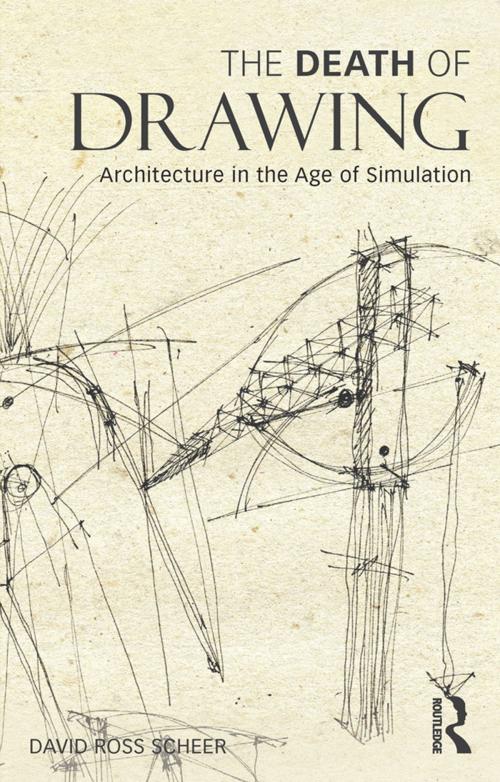The Death of Drawing
Architecture in the Age of Simulation
Nonfiction, Art & Architecture, Architecture, Design & Drafting| Author: | David Ross Scheer | ISBN: | 9781317803034 |
| Publisher: | Taylor and Francis | Publication: | June 5, 2014 |
| Imprint: | Routledge | Language: | English |
| Author: | David Ross Scheer |
| ISBN: | 9781317803034 |
| Publisher: | Taylor and Francis |
| Publication: | June 5, 2014 |
| Imprint: | Routledge |
| Language: | English |
The Death of Drawing explores the causes and effects of the epochal shift from drawing to computation as the chief design and communication medium in architecture. Drawing both framed the thinking of architects and organized the design and construction process to place architects at its center. Its displacement by building information modeling (BIM) and computational design recasts both the terms in which architects think and their role in building production. Author David Ross Scheer explains that, whereas drawing allowed architects to represent ideas in form, BIM and computational design simulate experience, making building behavior or performance the primary object of design.
The author explores many ways in which this displacement is affecting architecture: the dominance of performance criteria in the evaluation of design decisions; the blurring of the separation of design and construction; the undermining of architects’ authority over their projects by automated information sharing; the elimination of the human body as the common foundation of design and experience; the transformation of the meaning of geometry when it is performed by computers; the changing nature of design when it requires computation or is done by a digitally-enabled collaboration. Throughout the book, Scheer examines both the theoretical bases and the practical consequences of these changes. The Death of Drawing is a clear-eyed account of the reasons for and consequences of the displacement of drawing by computational media in architecture. Its aim is to give architects the ability to assess the impact of digital media on their own work and to see both the challenges and opportunities of this historic moment in the history of their discipline.
The Death of Drawing explores the causes and effects of the epochal shift from drawing to computation as the chief design and communication medium in architecture. Drawing both framed the thinking of architects and organized the design and construction process to place architects at its center. Its displacement by building information modeling (BIM) and computational design recasts both the terms in which architects think and their role in building production. Author David Ross Scheer explains that, whereas drawing allowed architects to represent ideas in form, BIM and computational design simulate experience, making building behavior or performance the primary object of design.
The author explores many ways in which this displacement is affecting architecture: the dominance of performance criteria in the evaluation of design decisions; the blurring of the separation of design and construction; the undermining of architects’ authority over their projects by automated information sharing; the elimination of the human body as the common foundation of design and experience; the transformation of the meaning of geometry when it is performed by computers; the changing nature of design when it requires computation or is done by a digitally-enabled collaboration. Throughout the book, Scheer examines both the theoretical bases and the practical consequences of these changes. The Death of Drawing is a clear-eyed account of the reasons for and consequences of the displacement of drawing by computational media in architecture. Its aim is to give architects the ability to assess the impact of digital media on their own work and to see both the challenges and opportunities of this historic moment in the history of their discipline.















